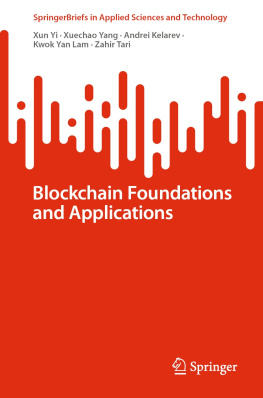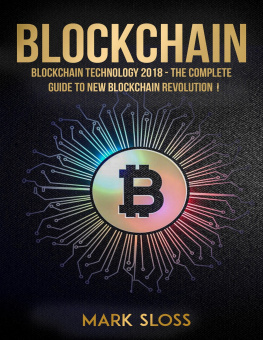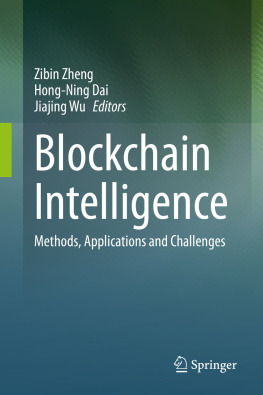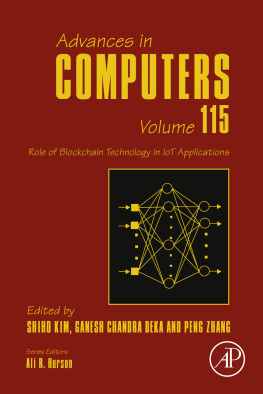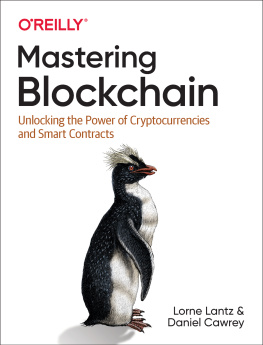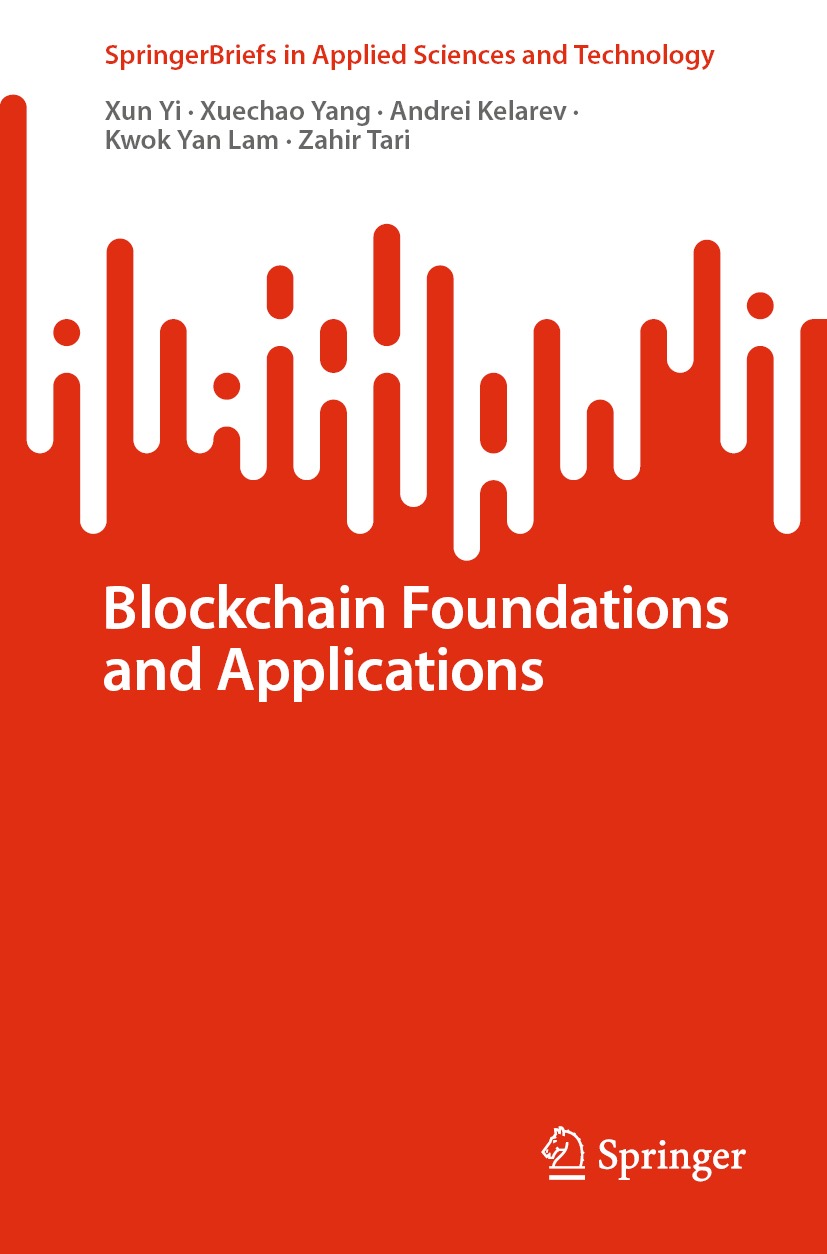SpringerBriefs in Applied Sciences and Technology
SpringerBriefs present concise summaries of cutting-edge research and practical applications across a wide spectrum of fields. Featuring compact volumes of 50 to 125 pages, the series covers a range of content from professional to academic.
Typical publications can be:
A timely report of state-of-the art methods
An introduction to or a manual for the application of mathematical or computer techniques
A bridge between new research results, as published in journal articles
A snapshot of a hot or emerging topic
An in-depth case study
A presentation of core concepts that students must understand in order to make independent contributions
SpringerBriefs are characterized by fast, global electronic dissemination, standard publishing contracts, standardized manuscript preparation and formatting guidelines, and expedited production schedules.
On the one hand, SpringerBriefs in Applied Sciences and Technology are devoted to the publication of fundamentals and applications within the different classical engineering disciplines as well as in interdisciplinary fields that recently emerged between these areas. On the other hand, as the boundary separating fundamental research and applied technology is more and more dissolving, this series is particularly open to trans-disciplinary topics between fundamental science and engineering.
Indexed by EI-Compendex, SCOPUS and Springerlink.
Xun Yi , Xuechao Yang , Andrei Kelarev , Kwok Yan Lam and Zahir Tari
Blockchain Foundations and Applications

The Springer logo.
Xun Yi
School of Computing Technologies, RMIT University, Melbourne, VIC, Australia
Xuechao Yang
School of Computing Technologies, RMIT University, Melbourne, VIC, Australia
Andrei Kelarev
School of Computing Technologies, RMIT University, Melbourne, VIC, Australia
Kwok Yan Lam
School of Computer Science and Engineering, Nanyang Technological University, Singapore, Singapore
Zahir Tari
School of Computing Technologies, RMIT University, Melbourne, VIC, Australia
ISSN 2191-530X e-ISSN 2191-5318
SpringerBriefs in Applied Sciences and Technology
ISBN 978-3-031-09669-3 e-ISBN 978-3-031-09670-9
https://doi.org/10.1007/978-3-031-09670-9
The Author(s), under exclusive license to Springer Nature Switzerland AG 2022
This work is subject to copyright. All rights are solely and exclusively licensed by the Publisher, whether the whole or part of the material is concerned, specifically the rights of translation, reprinting, reuse of illustrations, recitation, broadcasting, reproduction on microfilms or in any other physical way, and transmission or information storage and retrieval, electronic adaptation, computer software, or by similar or dissimilar methodology now known or hereafter developed.
The use of general descriptive names, registered names, trademarks, service marks, etc. in this publication does not imply, even in the absence of a specific statement, that such names are exempt from the relevant protective laws and regulations and therefore free for general use.
The publisher, the authors, and the editors are safe to assume that the advice and information in this book are believed to be true and accurate at the date of publication. Neither the publisher nor the authors or the editors give a warranty, expressed or implied, with respect to the material contained herein or for any errors or omissions that may have been made. The publisher remains neutral with regard to jurisdictional claims in published maps and institutional affiliations.
This Springer imprint is published by the registered company Springer Nature Switzerland AG
The registered company address is: Gewerbestrasse 11, 6330 Cham, Switzerland
Preface
The concept of a blockchain was invented in 2008 originally for the use in the first digital currency Bitcoin. Blockchain is a decentralized, distributed, open, and growing ledger or list of verifiable permanent records, which are linked and are made immutable by applying cryptography. Blockchain is maintained by a decentralized peer-to-peer network. Once the data is recorded in the ledger, it cannot be altered, which means that the ledger is tamper-resistant. The participants of a blockchain network can independently and inexpensively verify the validity of the records stored on the blockchain ledger.
The success of Bitcoin has inspired numerous other applications of the blockchain technology. Rapidly expanding applications of blockchain have revolutionized many aspects of modern society including the cloud data storage, commerce, crowdsourcing and crowdsensing systems, data structures, digital right management, distributed databases, economy, financial services, healthcare, imported product traceability, IoT information sharing, large-scale networks, law, logistics supply chains, medical records, multiagent symbiotic systems, payment systems, security, smart cities, synchronization, transportation systems, trust management, and video games. Fast development of the blockchain applications has attracted the attention of a rapidly growing number of researchers and industry practitioners.
The aim of this monograph is to provide a comprehensive and rigorous exposition of the basic concepts and most important modern research results concerning blockchain and its applications with emphasis on including complete technical details. The book includes the required cryptographic fundamentals underpinning the blockchain technology, since understanding the concepts of cryptography involved in the design of blockchain is necessary for mastering the security guarantees furnished by blockchain. The book contains an introduction to cryptographic primitives, and separate chapters on Bitcoin, Ethereum and smart contracts, public and private blockchain, cryptocurrencies, and blockchain applications.
Thorough presentation of the required cryptographic prerequisites and examples of modern research results on blockchain and applications would be of great interest to active researchers keen to develop novel applications of the blockchain in the field of their investigation.
Industry practitioners would also find the book useful and interesting as they need to compare and choose appropriate blockchain applications for their industry, combine several options, and may wish to modify the existing applications or develop new ones.
The book will be also beneficial as a reference text for the undergraduate students in computing and information technology courses where a rigorous monograph on the foundations of blockchain and its applications may be necessary. The text can be also used as a general introduction for self-study by the higher-degree research students at the corresponding departments.
The level of presentation is accessible to the undergraduate students in the departments of computer science, information technology, engineering, or mathematics with sufficient explanations provided. The text adheres to the level of clarity and rigour adopted by the modern high-quality research publications.

